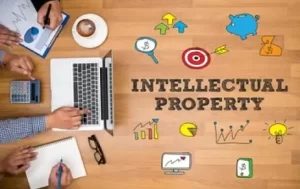A social media influencer is someone who creates content based on their niche in various…
Analysis of IP Redressal Mechanism in India
Introduction
Recently, in response to a writ petition addressed to it, the Madras High Court has reinstated the need for a remedial institution in order to cater to the disputes revolving around Intellectual Property. It has furthered the establishment of the Intellectual Property Division which is planned out to be a segregated division responsible for hearing such disputes. The need for such an institution arose after the abolition of the Intellectual Property Appellate Board (IPAB) which functioned in the similar fashion.
The Abolishment Of Intellectual Property Appellate Board
The Intellectual Property Appellate Board (IPAB) was instituted in the year 2003. Initially its jurisdiction covered issues related to GI Tags and Trademarks only but gradually it was extended to cover Patents and Copyrights as well. This extension of jurisdiction showed a clear and positive indication of the Government’s intent to opt for a centralised system which deals with specific IP problems through a designated set of experts handling the same. The premise behind such an institution was two-fold:
[a.] It aimed at reducing the work load of the current legal system which is already overburdened with an array of cases.
[b.] To provide tailor made and quicker solutions for disputes by the experts belonging to that field.
While the idea was sacrosanct and it did deliver on its promises for a short while, it ended up succumbing due to the various operational, non-functional and technical difficulties which arose in due time.
[Image Sources : Shutterstock]
After the abolishment of a centralised system which was tainted with many malfunctions the judiciary is now looking forward to a state wise division of IP matters. Before the Madras HC, the Delhi HC made the first move at creating such a division which specifically dealt with IP cases. Although it did not comprise of the set of experts who were present to provide judgements as well as their important insights, it consisted of nominated Judges who dealt with the same matters under their jurisdiction regularly. The replacement of such a Board with a division comes from the prior experience of successfully executing the Delhi HC’s separate segmentation of Arbitration cases.
Status Quo
Currently, the country direly needs a segregated IP redressal mechanism. While the Tribunal was indeed functional and delivered some of the landmark judgements, its prime objective of reducing the pendency and the quantum of cases was allegedly not met and in order to fix the same, the government, instead of taking rehabilitating steps went on to abolishing the entire system.
The onus now rests on the individual courts to come up with a system to tackle this problem. The Delhi HC has been vigilant and has already taken steps to come up with an alternative. The Madras HC which tried to follow suit in July, has not been able to establish such an Intellectual Property Division as of now due to governmental dysfunctionalities.
The absence of a formal system of dispute redressal is going to be extremely detrimental on the business front of India as well. One of the biggest reasons for companies which are fairly active in the IP area to function in India was a systemised way of redressal which helped them in not only getting their claims heard sooner but at the same time through a panel of experts who have specialized in that very sector.
Leaving it individually to the courts, even in an optimistic scenario where we would be able to find IP Divisions in most parts of the country, would not solve the problem of delay in addressal of cases by the courts as a it would merely lead to a bifurcation of the current strength of judges. While it is true that the cases in relation to IP will reach to the courts at a faster rate, the delivery of justice will take a similar amount of time as no new addition of extra judges or specialised experts has been made under this scheme; It comprises of the same amount of judges who dealt with similar cases before and will now do the same under a new division. A lack of expert knowledge on account of the judges will also hamper the quality of judgements which are to come.
Under the previous appellate tribunal, there existed a fundamental freedom to exercise its jurisdiction specifically to IP matters. Apart from that they also were equipped with technically sound personnel, who were not judges, thereby taking the burden away from courts. It was constantly tainted by accusations of slow delivery of justice but it still managed to deliver 48.9 cases per month in 2020, a time which was pandemic ridden. Such data proves the fact that it might have had various dysfunctionalities and technical and infrastructural shortcomings, like every other Indian institution, it did end up delivering on its promise of proving faster and better solutions.
Conclusion
The long way forward would be to re-establish a centralised redressal mechanism with the viewpoint of not only tackling the cases in a faster and better manner but also keeping in mind the ways to avert the shortcomings the previous model had to offer. A short-sighted but an effective way would be to make the formation of such divisions mandatory at IP hubs of our country such as Mumbai and Bangalore and a complimentary issuance of directions to the government for its smooth execution. Along with that, the divisions can also be equipped with a specialised panel of experts who would provide for their insights wherever required, so that the quality of judgements is not tampered.
Author : Gyanesh Mishra, A Student at NLU Odisha, in case of any queries please contact/write back to us via email to [email protected] or at IIPRD.
References
2023 LiveLaw (Mad) 58.
https://www.mondaq.com/india/trademark/1074448/abolishment-of-ipab-changes-to-the-ip-regime
Ordinance No. 2 of 2021.
https://www.barandbench.com/columns/intellectual-property-division-of-the-delhi-high-court-the-way-forward



